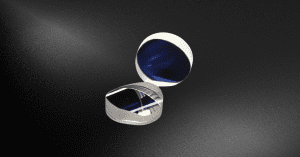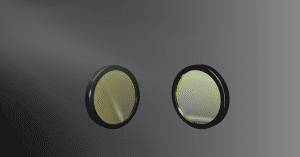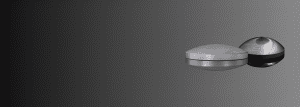Infrared Mirrors (IR Mirrors)
Infrared Mirrors (IR Mirrors) provide optimal reflectance in the infrared spectrum, and play an important part in optical path folding, beam steering, and many other applications. At Avantier we produce custom Infrared Mirrors (IR Mirrors) for our clients in industry, medicine, research and defense.
Types of Infrared Mirrors (IR Mirrors)
Infrared mirrors (IR Mirrors) are often tailored to the specific IR wavelength range required for an application, whether that might be near-infrared (NIR) or long wave infrared (LWIR). Mirror coatings, such as gold, silver, or dielectric, can be chosen to provide high reflectivity in a chosen wavelength. Typically, an Infrared mirror (IR Mirror) will reflect between 85 to 98 percent of incident light over a specified wavelength range. This can be significantly higher for dielectric mirrors (up to 99.7 for specific incident angles).
- Silver metallic coatings offer optimal reflectivity between 500 and 800 nm
- Gold metallic mirror coatings perform best between 750 and 1500 nm
- Dielectric coatings are suited for ranges between 800 to 1600 and can be designed to provide ultra-high reflection at specific laser wavelengths within that range.
Protected aluminum coatings are an affordable option for use in the near infrared spectral range. To protect aluminum, a very thin coating of silicon monoxide (SiO) is often added as a guard layer. A dielectric overcoat is another option.
Unprotected metallic finishes are very delicate and should not be touched or cleaned by anything other than dry air. If you’ll need to handle your metallic mirrors, you should consider requesting a protective overcoat. Protective layers are available for silver, gold, and aluminum coatings. Dielectric coatings are more robust and do not require additional protective coating.
The same geometrical shapes available for other optical mirrors are also available for the IR range. Among the options you have are spherical, aspheric, parabolic, off-axis parabolic, and optical flat mirrors.
Cold and Hot Mirrors
Cold mirrors are designed to reflect visible light while transmitting infrared radiation, and hot mirrors will reflect infrared radiation and transmit visible light. Both hot and cold mirrors are used for the same purpose: to remove infrared radiation from an optical system. They are essential components of many precision optical systems where waste heat could damage delicate components.
Hot mirrors, then, are a specific type of IR Mirror. They typically have dielectric coatings and are designed to fit into a system in such a way as to receive light at an angle of incidence between 0-45 degrees.
Custom Infrared Mirrors (IR Mirrors) at Avantier
When you need a custom infrared mirror, you want to work with optical designers and engineers who know what they are doing, and you want them to be backed by a manufacturer with extensive manufacturing capabilities and long-reaching supply chains. That’s what makes Avantier a manufacturer of choice for so many customers today. We’ll work with you to create a custom infrared mirror that exactly matches your need, crafting it precisely and testing it thoroughly so it’ll perform just as desired. That’s the Avantier difference. Contact us today to place a custom order or schedule an initial consultation.
WE CAN HELP YOU!
Contact us NOW for sales & expert advice.






